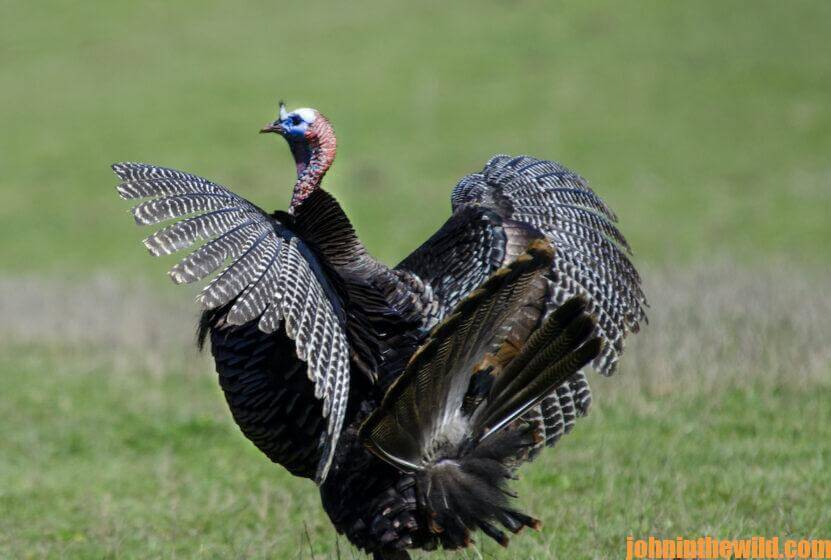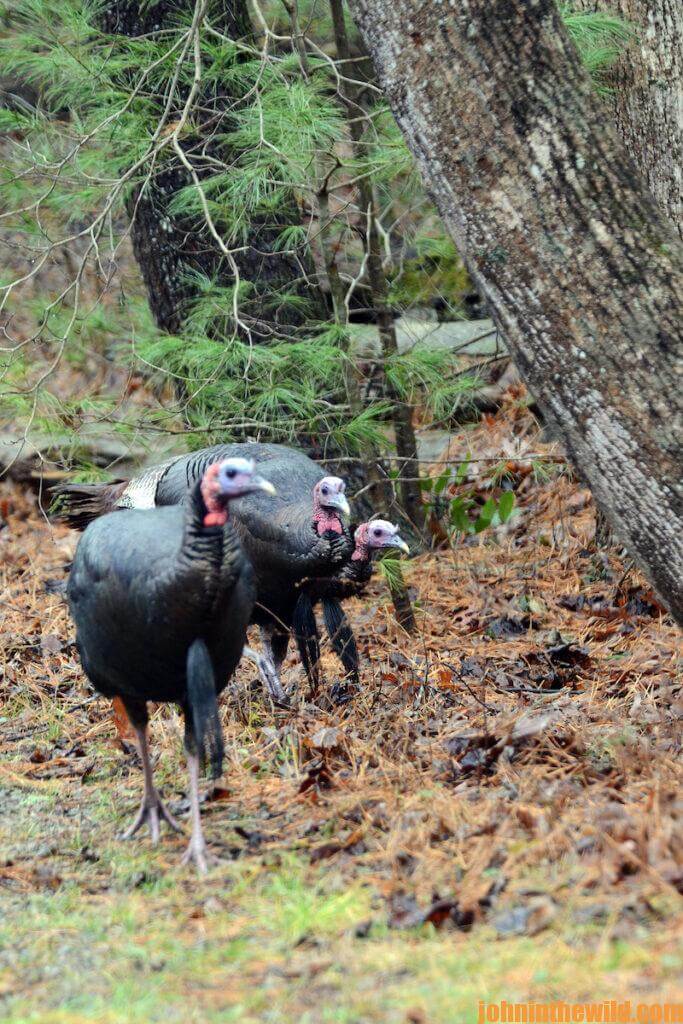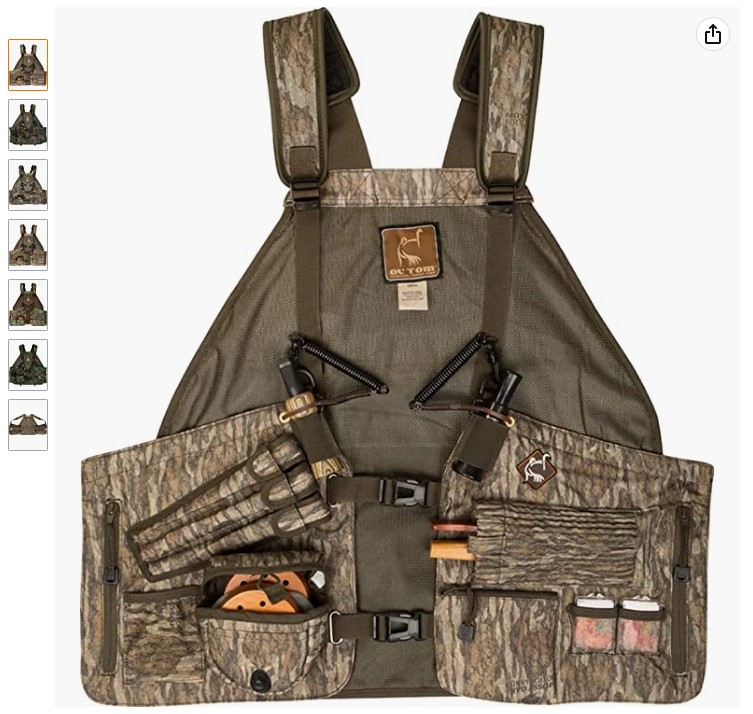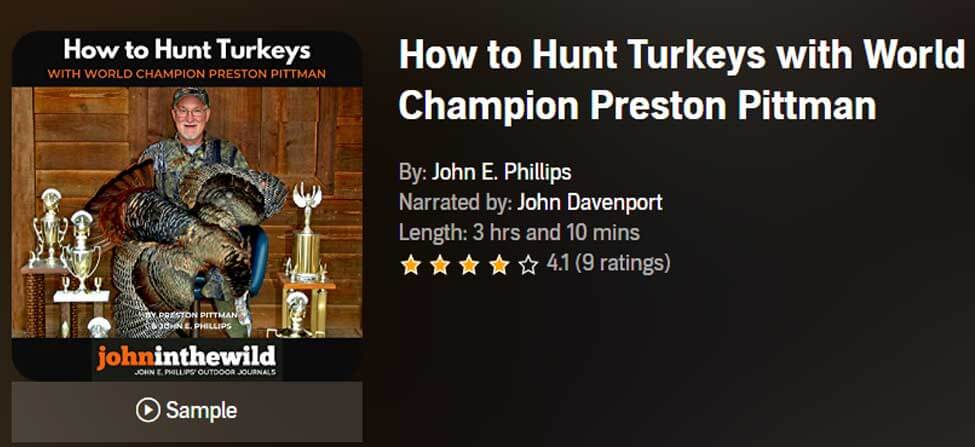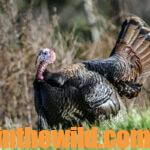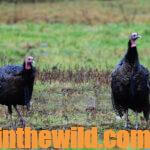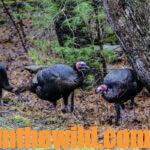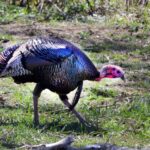Editor’s Note: Even the experts can’t agree on what’s best. But perhaps I can help you make up your own minds about to move or not to move on tom turkeys? That’s the question. Many of us who hunt turkeys fail to come up with the right answer.
About 80% of the mistakes made when turkey hunting occurs when you either move too soon or don’t move soon enough. Here’s a look at two of the nation’s best turkey hunters who have different styles of hunting. Let’s see if we can learn when to move and when not to move on tom turkeys.
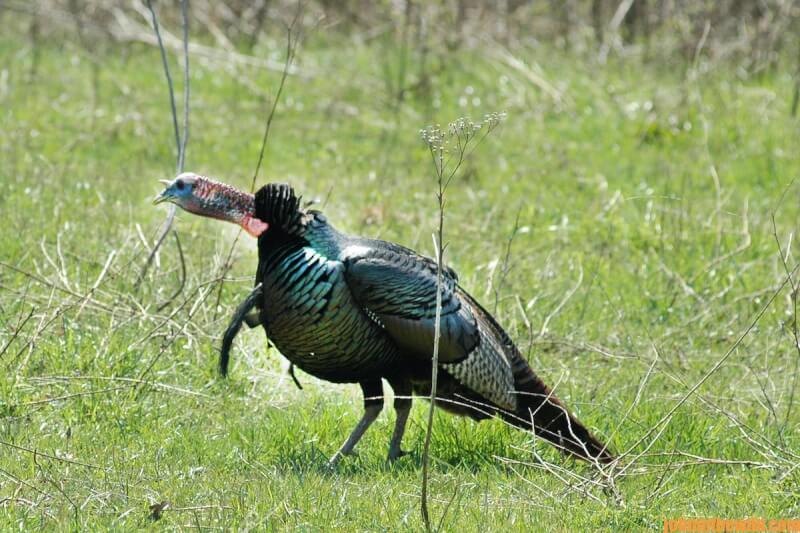
Chasing down the elusive tom turkey with Bo Pittman
“If you want to take a turkey and are willing to do whatever is required to get your gobbler, usually we’ll bag a bird,” Bo Pittman, a longtime guide and avid turkey hunter, said on the first morning of my hunt. Before daylight, we had gone to the base of a hill and listened. Just before dawn, a turkey gobbled.
“Let’s go,” Pitman instructed. “We’ve got to get to that tom before he flies down.”
We ran up the edge of a dirt road and headed into the woods to set up on the gobbler. Pitman called several times. We heard the turkey fly down and gobble, coming to us. But for some reason, the turkey hung up and wouldn’t move on in to where we were.
After a 20-minute wait, we backed out of the woods the same way we had entered. Staying close to the ground and moving as quietly as possible, we circled the tom, got above him, and tried to call to him. However, apparently, the bird had seen us move, because he never gobbled.
Pitman informed me, “Don’t worry, John. I know where another bird is – about 1/2-mile from here. If we hurry, we can get to him while he’s still gobbling.”
Walking fast and jogging occasionally, we covered the ground quickly until we came to the edge of a field. Pitman gave three yelps. A turkey gobbled just over a hill in the middle of the field. “If we stay behind this hill, we can move-up to the edge of this woodline and attempt to call the turkey out of the field to us,” Pitman suggested.
However, when we started moving down the road, we had walked less than 50 yards before we spotted a gobbler, and he saw us. The turkey ran down the road before taking to the air. By now the time was 9:30 am. I felt our chances of bagging a turkey were somewhere between slim and non-existent.
But Pitman commented with a big smile spread across his face. “Don’t stick a fork in me, John. I’m not done yet. A field about 3/4-mile from here always has turkeys in it. I believe we still can get one in the middle of the day.”
As we went at a forced march pace toward the field, Pitman mentioned, “These turkeys come out into the field to feed, strut, bug, dust, and mate. However, when the sun climbs high in the sky, and their dark feathers start to heat up, the heat of the sun will force them out of the fields and back into the woods to locate shade. We’ll be waiting on them.”

When we arrived at the second field, Pitman and I climbed down in a ditch, which was at least 1/2-mile long, and ran along the top of the field. As we belly crawled up the ditch, Pitman cautioned me to, “Stay low, and be quiet.”
After a 50-yard crawl, we eased up to the edge of the ditch. Using our binoculars, we looked at the turkeys below us. At least 40 birds were in the flock, which included seven longbeards and 1/2-dozen to one dozen jakes.
Through our binoculars, we saw a band of three gobblers standing on a road. We watched as two of the toms fought, and the dominant gobbler bred a hen.
“Let’s move to the point of the field above the turkeys,” Pitman said. “Then when the birds are ready to go into the woods, we can move and get in front of them.” We crawled back out of the ditch and made a 1/2-mile circle through the woods into the field to come out in the woods at the point of the field.
From that spot, we watched for about an hour until the three gobblers began to move toward the woodline. Pitman mentioned he thought the birds were coming into the woods below us, and we needed to move once more.
We backed away from our observation point and traveled at least 250 yards into the woods before circling below the point where we had been watching the turkeys. I sat by the base of a large oak tree, and Pitman sat about 10 yards behind me. After Pitman gave some light yelps, a few putts, and a turkey’s gobble, he never called again.
While I watched the procession of turkeys walking, I knew Pitman had guessed right, although I wanted to take the longbeard, when the lead gobbler got in front of me, he spotted me, craned his neck, and began to putt. However, I already had my bead on the bird’s neck, I squeezed the trigger. When I picked up the tom, I looked at my watch, which reported 11:30 am.
We had seen turkeys all morning long, had the opportunity to call two, and finally bagged the third bird.

This run-and-gun hunt was one of the finest turkey hunts ever for me. As Pitman observed, “If you stay with me, hunt birds long enough, and are willing to do whatever is required to take a gobbler, you can get your turkey.”
How to Know When to Go and When to Stay with Tom Turkeys
Both Bo Pitman (see Days 4 & 5) and Dale Faust (see Days 1-3) are fine turkey hunters with their own styles that have been highly successful for each of them. You decide whether you should or you should not move by evaluating your skills and knowledge of the birds and land you’re hunting.
To Stay and Wait on Tom Turkeys
To set up and wait on a turkey, you either must have a double dose of patience or else develop this skill. If you can’t sit still for some time and believe in your own ability to wait however long you must for a gobbler to come in, then you won’t be as effective as you can be using this tactic.
You also must understand what a turkey is doing and why. For instance, if a turkey is with hens and won’t come in, you’ve got to be able to call to him and make him respond.
If the gobbler is call-shy, you have to know how to force him to come to your call. If the bird is across a creek or on the other side of a thicket, you must understand how to excite that tom enough to force him to cross that obstacle or wait long enough for the turkey to eventually come to where you are.
You have to know when not to call, when to call, and what calls to use as well as understand what’s going on in the woods around you. You must outthink a gobbler and play mental games with him to make him come to where you are.
To Run-and-Gun Tom Turkeys
To run-and-gun gobblers like Bo Pitman does, you must spend time scouting, learning the lay of the land, and determining where turkeys want to go and when they want to go there to aid you in planning your stalk and ambush.
Observing turkeys at great distances with binoculars is another key to successfully being able to run-and-gun turkeys.
Also, you’ve got to be in good shape to run-and-gun gobblers and be willing to walk 3-10 miles in a day of hunting. You must be certain how far you are from a turkey to know whether to run or crawl.
You must hunt an area with plenty of turkeys. Then if you do spook a gobbler, you can go to another bird before the day is over.
You must be willing to wade creeks, climb mountains, and belly crawl through mud or possibly cow pastures to get in a position to take a shot.
You’ve got to be able to outmaneuver a turkey and rely mostly on your woodsmanship rather than your calling skills.
How to Choose to Wait or Run with Tom Turkeys
Which way is best for hunting turkeys – run and gun, or stay put and wait? This question can be answered only by you and your own personal philosophy of hunting. I’ve hunted turkeys both ways and found both tactics equally effective.
Generally, I let the knowledge of the land I’m hunting dictate the strategy I use. If I don’t know the land and the turkeys on it, then I’ll usually wait the gobblers out.
If I’m familiar with the land or I’m hunting with a person who knows the land, then I’ll often run-and-gun gobblers. To move or not to move is the question. Your knowledge of the birds and the land on each hunt you go on will give you the best answer.
Gear Recommendations for Hunting Tom Turkeys: Drake Waterfowl Ol’ Tom Time & Motion Easy-Rider Turkey Vest in Mossy Oak Bottomland
The Time & Motion™ Easy-Rider Turkey Vest was built for the hunter that wants the lightest, most functional turkey vest on the market. Comfort features include our T-Beam back pad for comfort while leaning against a tree and our Magnattach™ padded rear seat cushion – the quietest, easiest, and fastest seat cushion on the market. Adjustable chest/waist straps to accommodate all adult sizes.
Affiliate Disclosure: JohnInTheWild.com is reader-supported. If you purchase anything we mention using our referral links, we may get a small commission. However, there’s no extra cost to you. Thanks for supporting John E. Phillips’ Outdoor Journals!
Expert Guidebooks on Turkey Hunting: Best Sellers
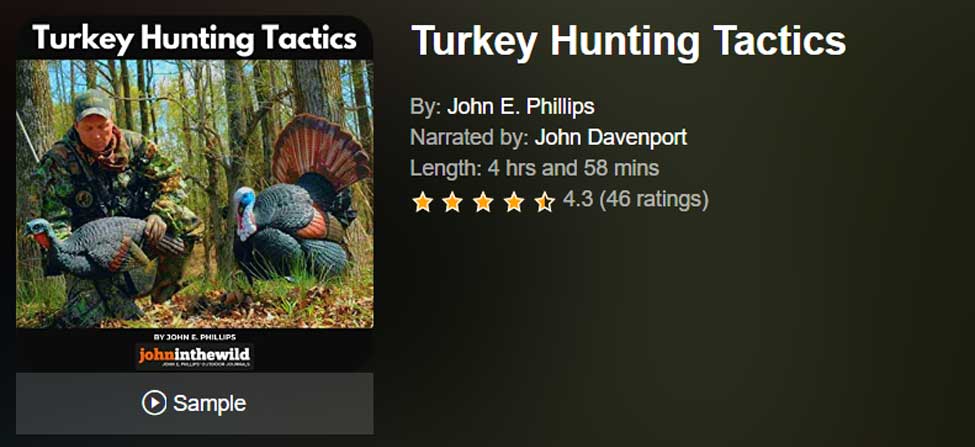
Turkey Hunting Tactics
This turkey hunting audiobook has entertaining chapters like: “How to Miss a Turkey”, “Hunting with a Guide”, and “The Turkey and the New York Lady”.
You’ll learn about all the subspecies of turkey across North America, how to use a turkey call, how to scout before turkey season, how to find a turkey to hunt, and what hunting gear you’ll need to put the odds in your favor to take a wily gobbler.
VERSIONS: AUDIBLE, KINDLE & PRINT
How to Hunt Turkeys with World Champion Preston Pittman
You easily can take a turkey if you don’t make any mistakes, but you have to know what the deadly sins of turkey hunting are to keep you from making those mistakes. If you understand how to hunt a turkey, you’re far more likely to take a gobbler than if you just know how to call a turkey.
Of course, calling is important, and if you want to learn to call a turkey, Preston Pittman will teach you how to call turkeys with box calls, friction calls, diaphragm calls, and other turkey sounds.
You’ll also learn why Preston Pittman once put turkey manure all over his body to kill a tough tom.
When you have turkeys that strut and drum in the middle of a field, when you know there’s no way to get close enough to get a shot, Pittman will show you some weird tactics that have worked for him to help you hunt tough ole toms.
But the main thing you’ll learn in this book is how to become the turkey.
Using what he’s learned while hunting wild turkeys, he’s also become a master woodsman who can take most game, regardless of where he hunts. To learn more secrets about how to be a turkey hunter from one of the world champions of the sport, this turkey-hunting book with Preston Pittman is a must.
VERSIONS: AUDIBLE, KINDLE & PRINT
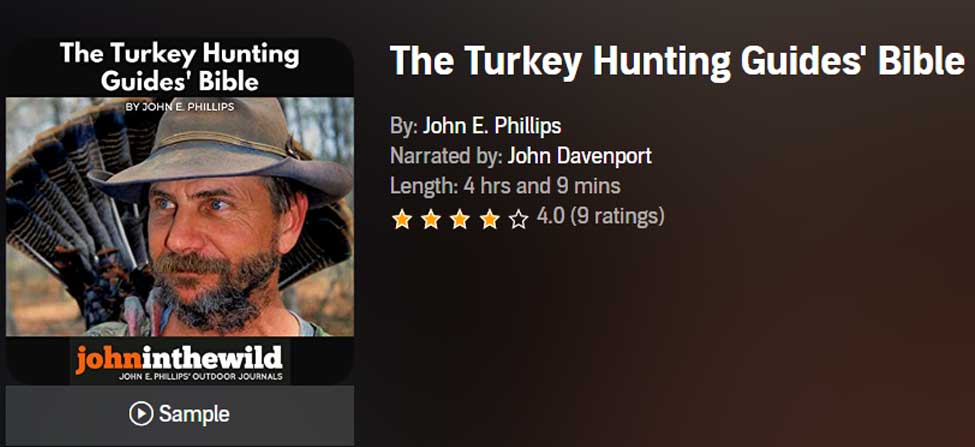
The Turkey Hunting Guides’ Bible
The quickest way to learn how to turkey hunt successfully is to either hunt with a turkey hunter with years of experience or a turkey-hunting guide. These two types of turkey hunters have solved most of the problems turkey hunters ever will face.
Just as one size of shoes won’t fit every person, one style of turkey hunting doesn’t fit each hunter. Each turkey-hunting guide interviewed for this book has his own style of calling, hunting, and outsmarting turkeys.
While listening to this book, make a list of the new information you’ve learned, take that list with you during turkey season, and try some of the new tactics. Then you’ll become a more versatile turkey hunter and prove the wisdom from The Turkey Hunting Guides’ Bible.
VERSIONS: AUDIBLE, KINDLE & PRINT
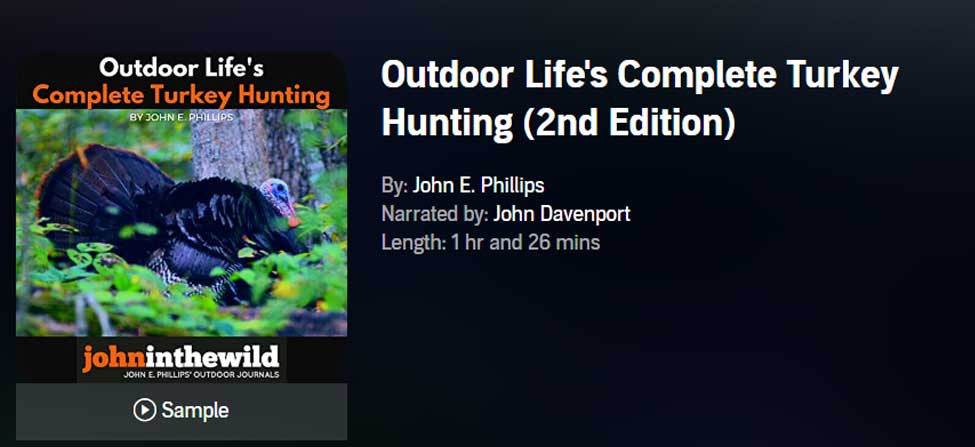
Outdoor Life’s Complete Turkey Hunting (2nd Edition)
This Audible book will help you learn how to call turkeys with two of the nation’s best, longtime and well-known turkey callers, Rob Keck, formerly with the National Wild Turkey Federation, and Lovett Williams, a wildlife biologist who recorded wild turkeys giving the calls that you’ll learn how to make on various types of turkey callers.
VERSIONS: AUDIBLE & KINDLE
When you use the links below to go to Amazon, notice on the left of the Audible option where Amazon says you can hear a sample that gives you 10% of these books for free! On the right side of the page for each book and below the offer for a free Audible trial, you can choose to Buy the Audible book.
Be sure to also check out John’s Free Books as our gift to you!
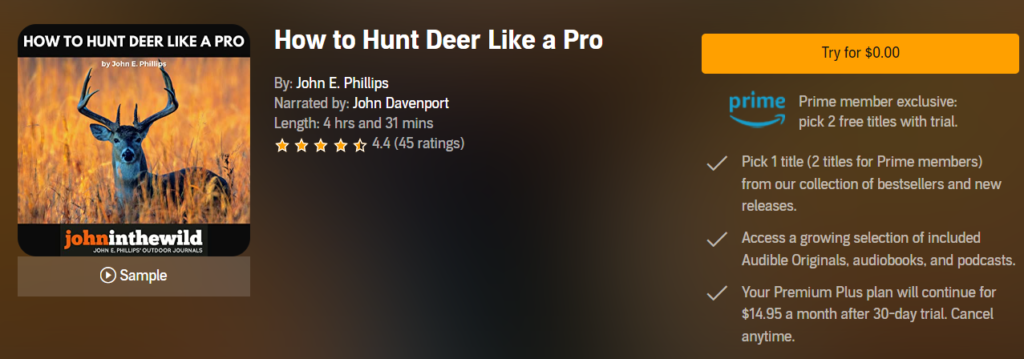
Prime Members: You’re eligible to claim 2 free titles with your 30-day Audible Premium Plus trial! Browse more than 100 of John E. Phillips’ expert guidebooks on hunting and fishing here.
Books By Topic
Category Shortcuts: View on Amazon
| Deer Hunting | Turkey Hunting | Elk Hunting | Bass Fishing |
| Mule Deer Hunting | Bowhunting | Bowfishing | Crappie Fishing |
| All Cookbooks | Hunting Cookbooks | Fishing Cookbooks | All Audible Books |



